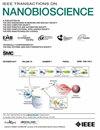Design and Fabrication of Enzymatic Potentiometric Biosensor Based on Flexible Printed Circuit Board for Glucose Detection
IF 3.7
4区 生物学
Q1 BIOCHEMICAL RESEARCH METHODS
引用次数: 0
Abstract
This study investigated the development and optimization of a flexible printed circuit board-based glucose biosensor with an emphasis on high sensitivity, selectivity, and overall performance. Advances in glucose biosensing have highlighted its importance in medical diagnostics, especially diabetes management. The fabrication process involves depositing a RuO2 sensing film on a flexible printed circuit board (FPCB) by radio frequency sputtering. Enzyme-based modification using glucose oxidase (GOx), (3-aminopropyl) triethoxysilane (APTES), and glutaraldehyde (GA) to enhance selectivity and catalytic reactions. And through Scanning Electron Microscopy and electrochemical impedance spectroscopy, the sensing film, and the effect of modification on the charge transfer rate and performance improvement were analyzed. This glucose biosensor has excellent linearity, sensitivity, and reproducibility. The study also assessed response time and selectivity. The response time efficiency of the biosensor solidified its utility in point-of-care monitoring, while selectivity experiments validated its ability to distinguish glucose from interfering substances, ensuring accuracy in practical applications. According to the experimental results, the enzymatic glucose biosensor has the best average sensitivity and linearity of 44.42 mV/mM and 0.999 with a response time of 6 seconds.基于柔性印刷电路板的葡萄糖酶电位生物传感器的设计与制造。
本研究研究了基于柔性印刷电路板的葡萄糖生物传感器的开发和优化,重点是高灵敏度,选择性和整体性能。葡萄糖生物传感的进展突出了其在医学诊断,特别是糖尿病管理中的重要性。制造过程包括通过射频溅射在柔性印刷电路板(FPCB)上沉积RuO2传感膜。利用葡萄糖氧化酶(GOx)、(3-氨基丙基)三乙氧基硅烷(APTES)和戊二醛(GA)进行酶修饰以提高选择性和催化反应。并通过扫描电镜和电化学阻抗谱,分析了改性对传感膜的电荷传递速率和性能改善的影响。该葡萄糖生物传感器具有良好的线性、灵敏度和重复性。该研究还评估了反应时间和选择性。生物传感器的响应时间效率巩固了其在护理点监测中的实用性,而选择性实验验证了其区分葡萄糖和干扰物质的能力,确保了实际应用中的准确性。实验结果表明,酶促葡萄糖生物传感器的平均灵敏度为44.42 mV/mM,线性度为0.999,响应时间为6秒。
本文章由计算机程序翻译,如有差异,请以英文原文为准。
求助全文
约1分钟内获得全文
求助全文
来源期刊

IEEE Transactions on NanoBioscience
工程技术-纳米科技
CiteScore
7.00
自引率
5.10%
发文量
197
审稿时长
>12 weeks
期刊介绍:
The IEEE Transactions on NanoBioscience reports on original, innovative and interdisciplinary work on all aspects of molecular systems, cellular systems, and tissues (including molecular electronics). Topics covered in the journal focus on a broad spectrum of aspects, both on foundations and on applications. Specifically, methods and techniques, experimental aspects, design and implementation, instrumentation and laboratory equipment, clinical aspects, hardware and software data acquisition and analysis and computer based modelling are covered (based on traditional or high performance computing - parallel computers or computer networks).
 求助内容:
求助内容: 应助结果提醒方式:
应助结果提醒方式:


